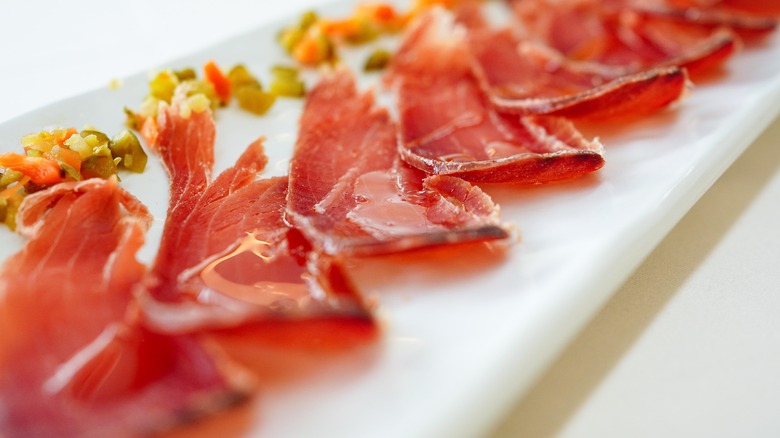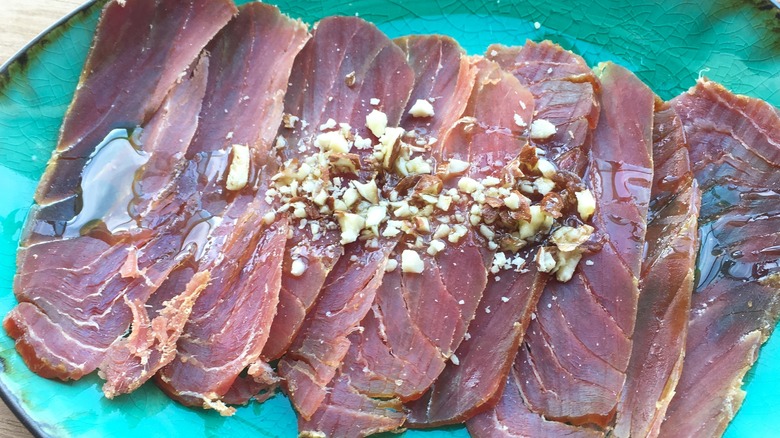Give Tuna The Gravlax Treatment With A Sweet And Salty Cure
Of all the fish in the sea, tuna has a reputation for being the meatiest. A highly active, enormous, muscular fish, it should come as no surprise that tuna meat comes with a certain strength of both flavor and texture. It's excellent for grilling, pan-searing, and for eating raw, either for sushi, carpaccio, or even gravlax.
But gravlax is traditionally made with salmon, isn't it? Yes, it is. But that doesn't mean you can't apply the principles to another type of fish. Not to be confused with lox, gravlax is a Scandinavian dish consisting of a long half of salmon that has been cured with a number of different seasonings. The fish is coated in heaping amounts of salt, sugar, citrus zest, juniper berries, fresh dill, black or white pepper, and aquavit. This curing process toughens the salmon to a sashimi-like texture, all while maintaining its delicate, fishy essence. The gravlax is then cut into thin slices and served between pieces of rye bread.
As tuna is a prized fish in Japanese cuisine for making sashimi, it stands to reason that the Scandinavian curing methods used for gravlax would translate equally well to this flavorful fish. And there is really no need to be intimidated — making tuna gravlax is something you can very easily achieve at home, provided you've got room in your fridge, and plenty of patience.
How to make tuna gravlax
The key to a good tuna gravlax is to buy the most sustainably caught, highest quality tuna possible. Do this and 90% of your work is already done. As tuna gravlax is essentially raw, the quality of the fish will have a great impact on the final flavor.
As far as seasonings go, you could go all in on the classic Scandinavian flavors, but a simple cure of salt, sugar, pepper, and a neutral spirit like vodka, or gin if you want that juniper flavor, works just as well. First, make sure you have a baking tray with raised sides that will fit your tuna. Another baking sheet, weighed down by a cutting board or brick, will be placed on top of the curing tuna so that all the seasonings really press into the meat.
Pat the tuna dry before sprinkling it with your chosen spirit. In a bowl, mix a ⅓ of a cup of salt and sugar respectively and 1 teaspoon pepper together. Season the tuna on all sides, wrap it in plastic wrap, and set the weighted baking sheet on top of it. Cure it in the fridge for 12 to 24 hours. Once it is finished, brush off any excess seasoning, slice thin, and serve it alongside cream cheese, a zesty dijon mustard, and dark rye bread or crackers.

